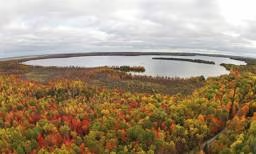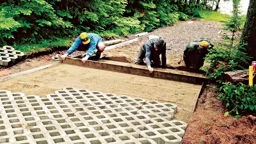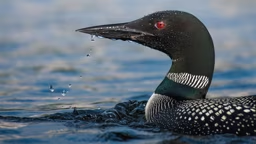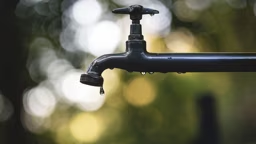To many of you, the phrase “lake weeds” will bring to mind images of fouled propellers and hopelessly snagged fishing lines. Thoughts of getting rid of those weeds may start to seem like a good idea. But removing all those weeds may not be the best option. We spoke to several experts to hear their thoughts on the best ways to manage the lake weeds – or more accurately, the “aquatic plants” – inhabiting your lake water.
Tread Lightly
“I think all cabin owners deserve a place to go swimming, and should have an area where they can get their boat in and out, whether that’s with a dock or a boat lift,” says Steve McComas, co-owner of Blue Water Science Consulting Co. and author of “Lake and Pond Management Guidebook.” McComas says, “There should be some plant management as appropriate. But at the same time, I would always recommend that owners remove the minimum amount of plants they need to clear the recreational areas they want.”
Dr. Jo Latimore of the Department of Fisheries and Wildlife at Michigan State University agrees with McComas’ light-handed approach. “Plants in the lake can be seen as a nuisance and hindrance to recreation, but I think it’s really important for property owners to recognize that these plants are an important and integrated part of the lake system,” Latimore says. “If the plants are removed, that lake system will be out of balance,” Latimore continues. “The plants play a really important role in the lake’s ecology, just like plants do on land. While it’s typically fine to manage plants in a small area so you can access the water for swimming and boating and installing your dock, you want to be careful and not overdo it, because those plants are really important in maintaining the health of the lake – everything from providing food and shelter for the fish in the lake to keeping silt and sediment stabilized so you don’t have a muddy, cloudy lake.”
Removing Plants
Managing the plant life around your dock and swimming area doesn’t have to be a complicated process. In fact, McComas recommends a simple hands-on method. Literally. “You can probably clear the space you need by just hand-pulling the plants,” he says. “First, you don’t need any equipment. Second, you’re not using any herbicides. And third, it’s pretty efficient. It’s really an easy way to clear a small area of plants.”
Young swimmers likely won’t be out past where the water is 3 or 4 feet deep, McComas says, so in most cases you really won’t have to go too far from shore to produce a good working swimming space. A variety of commercially available cutters and rakes are available to help with the plant trimming or removing process.
McComas also points out that many aquatic plants are perennials. If they’re trimmed responsibly, they’ll grow back year after year. Latimore also agrees with McComas’ method. “For small areas, physical removal is probably the most effective option,” she says. “If you can just go in and spend some time hand-pulling or carefully raking a small area that can be pretty effective and long-lasting. It’s not permanent – it’s just like pulling weeds in your garden – but it can be done and doesn’t require the use of chemicals.”
Other Options
Just like the aisles of products in the lawn and garden section of your local home store, there are plenty of chemical options tailor-made for aquatic plant control. There are pellets that can be dropped into the water, and liquid herbicides are available, too. As with all treatments, your keyword should be caution. “Using chemicals isn’t necessarily a bad thing,” Latimore says. “There are products out there that are quick-acting and have limited risk of floating off and impacting plants a half-mile down the shore. But it really pays to do some research before you use them.”
More Resources
When you have questions about how to proceed with the aquatic plants in your area, environmental educator Cindy Hagley of the Minnesota Sea Grant recommends starting locally with your state’s natural resource management agency, whether it’s the Department of Natural Resources (DNR) or the Department of Environmental Quality (DEQ). These departments are going to be able to advise you on the options that will work best in your unique situation, and they can also inform you on what kind of approvals you might need.
For example, if you’re considering physically removing plants, they can advise you if there are guidelines on the amount or species that can be removed. If you’re thinking of using chemicals in the water, you’ll want to make sure you use approved treatments, and obtain any necessary state permits before applying them.
Keeping a Healthy Lake
When it comes to nurturing a healthy relationship with aquatic plants, Latimore sums things up simply: “The plants in the lake are important. You can certainly maintain your recreational access without removing every plant. I think it’s important for people to think about that great balance of being able to use and enjoy the lake, while keeping it healthy for years to come.”
Tools for Removing Aquatic Plants
There are several types of tools available for removing aquatic plants. The list includes: aerators, bottom blankets, cutters, groomers, lake blowers, pellets, rakes, rollers, skimmers, tillers, and more. So how do you decide which of these tools, if any, are right for controlling aquatic plants around your dock or pier?
- Start by looking at what your local and state regulations allow.
- Next, talk to your neighbors to find out which legal, allowable methods have worked for them.
- Talk to a knowledgeable retailer who sells many different tools, and tell them about your specific needs. One such resource is Lake Weeder’s Digest, weedersdigest.com.
Exotic Species
If exotic species like Eurasian watermilfoil are present in your lake, they will be nearly impossible to eradicate. So prevention is the first line of defense against invasive species and is the most economical in the long run. Is there a prevention plan in place for your lake? Does your lake association mail out information on spotting and controlling exotic plants such as Eurasian watermilfoil or curlyleaf pondweed or exotic creatures like zebra mussels and Asian carp? Are public boat landings on your lake posted with cautionary signs? Some preventive measures that you can personally employ include:
- Avoid non-native plants (from the Internet or anywhere else). For lists of native plants, try your local county extension office or your state natural resources department.
- Clean your boat hull, motors and trailer thoroughly after removing your boat from a lake or river, making sure to eliminate all aquatic plant fragments.
- Drain water from live wells, bilges and bait buckets before moving to other waters.
- Dispose properly of unused bait when you complete a fishing trip (give it to other anglers, bury in the garden or put it in the trash).











